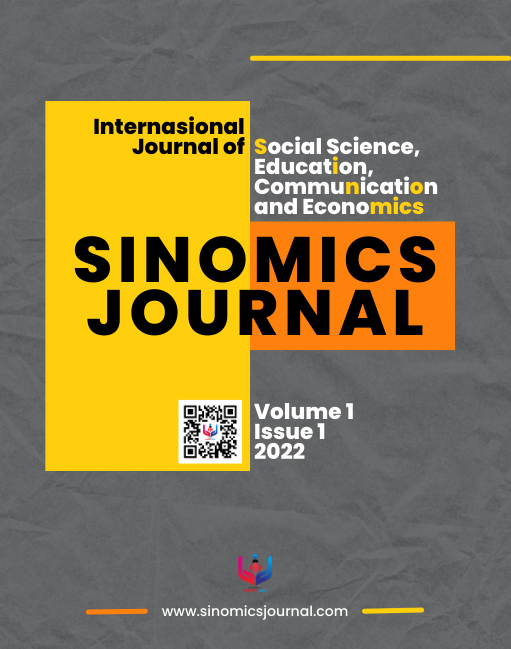Women Victims of Domestic Violence as a Gender-Based Crime
DOI:
https://doi.org/10.54443/sj.v1i1.2Keywords:
Woman, Domestic Violence, Gender-Based EvilAbstract
This study aims to find out why women are the dominant victims of domestic violence. This research uses a descriptive qualitative method, with a literature study. The result of this study is that the relationship between men and women is still unequal, which still considers men to be more than women in all respects so that the wife/woman is only in charge of household matters. The wife's economic dependence on her husband is also one of the triggers for the violence. So that the husband commits violence with the intention that the wife no longer refuses the husband's will, as well as to show masculinity. This oppression is also caused by a subordinate view that is supported by socio-political dynamics rooted in a hierarchical, submissive level and legitimizes violence as a control mechanism. The conclusion of this study is that domestic violence is part of gender-based violence because violence was born as a result of an imbalance in the pattern of power relations between men and women which was then justified by both state law and religious beliefs as a result of interpretation gender-biased religious texts. Building a pattern of relations that is egalitarian and fair and away from the practice of violence in the context of family life is part of both humanitarian and religious duties.
Downloads
References
Abdurrachman, H. (n.d.). Perlindungan Hukum Terhadap Korban Kekerasan Dalam Rumah Tangga dalam Putusan Pengadilan Negeri Sebagai Implementasi Hak-Hak Korban. 475–491.
Amalia, M. (2011). Kekerasan Perempuan dalam Perspektif Hukum dan Sosiokultural. Jurnal Wawasan Hukum, 25(02), 399–411.
Amalia, R., & Siregar, E. (2021). PAMPAS : Journal Of Criminal Perbandingan Pengaturan Tindak Pidana Kekerasan dalam Rumah Tangga dalam Hukum Pidana Indonesia dan Hukum Pidana Malaysia A . PENDAHULUAN keluarga yang tidak terlepas dari keinginan untuk mendapatkan kehidupan yang Tahun 1974 . 2, 1–14.
Dalam, K., Tangga, R., Ditinjau, K., Hukum, F., Prof, U., & Bengkulu, S. H. (2020). HUKUM POSITIF INDONESIA. 20, 20–27.
Irawaty, D. K., Berencana, K., & Bkkbn, N. (2020). Rumah Tidak Selalu Menjadi Surga : Krisis Kekerasan Dalam Rumah Tangga Berbasis Gender Saat Pagebluk Covid-19. 25–26.
Kemenppa. (2013). Kekerasan Terhadap Perempuan: Kekerasan Dalam Rumah Tangga dan Perdagangan Orang. Journal of Chemical Information and Modeling, 53(9), 1689–1699. Retrieved from https://www.kemenpppa.go.id/lib/uploads/list/7970a-5a3f9-8.-kekerasan-terhadap-perempuan.pdf
Muhajarah, K. (2016). Kekerasan Terhadap Perempuan dalam Rumah Tangga. Sawwa, 11(2), 127–146.
Pancasilawati, A. (2013). Kekerasan dalam Rumah Tangga Perspektif UU No.23 Tahun 2004 Tentang PKDRT dan Hukum Islam. Jurnal Mazahib, 2(23), 101.
Raco, J. (2018). Metode penelitian kualitatif: jenis, karakteristik dan keunggulannya. https://doi.org/10.31219/osf.io/mfzuj
Rofiah, N. (2017). Kekerasan Dalam Rumah Tangga dalam Perspektif Islam. Wawasan: Jurnal Ilmiah Agama Dan Sosial Budaya, 2(1), 31–44. https://doi.org/10.15575/jw.v2i1.829
Samsul Mu’min. (2006). Kekerasan Dalam Rumah Tangga Ditinjau dari Hukum Islam dan Hukum Positif. Skripsi S1.
Soendari, T. (2012). Metode Penelitian pendidikan Deskriptif oleh Tjutju Soendari. Metode Penelitian Deskriptif, 2(2), 15–23.
Soleman, N. (2020). Analisis Perbandingan Hukum Islam dan Undang Undang KDRT Tentang Kekerasan Dalam Rumah Tangga. Al-Wardah: Jurnal Kajian Perempuan, Gender Dan Agama, 14(2), 275–284.
Sugiyono. (2017). Metode Penelitian Kualitatif.
Sukamarriko Andrikasmi, & Emilda Firdaus. (2020). Perlindungan Perempuan Korban Kekerasan Dalam Rumah Tangga Menurut Sistem Hukum Indonesia Dan Sistem Hukum Islam. Jurnal Hukum Respublica, 20(1), 87–101. https://doi.org/10.31849/respublica.v20i1.5361
Sukardi, D. (2015). Kajian Kekerasan Rumah Tangga Dalam Perspektif Hukum Islam Dan Hukum Positif. Mahkamah, 9(1), 41–49.
Suryanti, S. (2019). Kekerasan Dalam Rumah Tangga (Analisis Fakta Sosial Berbasis Konseling Feminis Terhadap Ketimpangan Gender). Musawa: Journal for Gender Studies, 10(1), 1–22. https://doi.org/10.24239/msw.v10i1.385
Susanto, A. F. (2021). Pendekatan Restoratif dalam Kekerasan Rumah Tangga Menurut Perspektif Hukum Pidana. Pagaruyuang Law Journal, 4(2), 245–262.
Widyastuti, A. R. (2007). Hukum dan Kekerasan dalam Rumah Tangga. Jurnal Hukum Pro Justitia, 25(3), 68–77.
Downloads
Published
How to Cite
License
Copyright (c) 2022 Muhammad Abdullah, Hanafi, Afif Khalid, Gusti Wardiansyah, Riinawati

This work is licensed under a Creative Commons Attribution 4.0 International License.






 Results From Scopus: 80 Citedness
Results From Scopus: 80 Citedness















